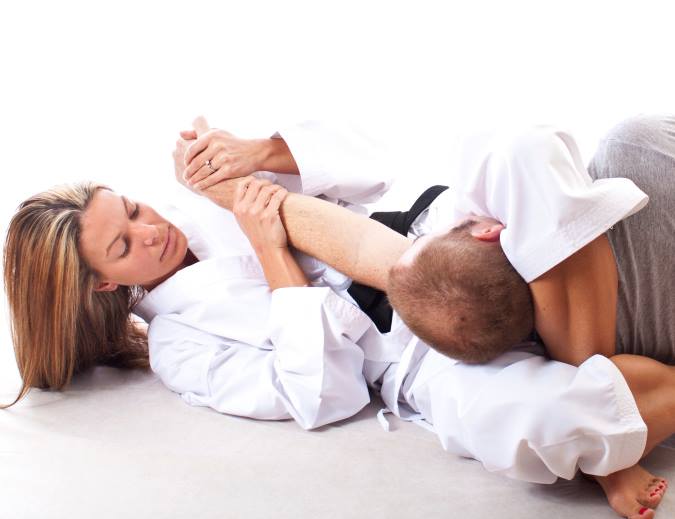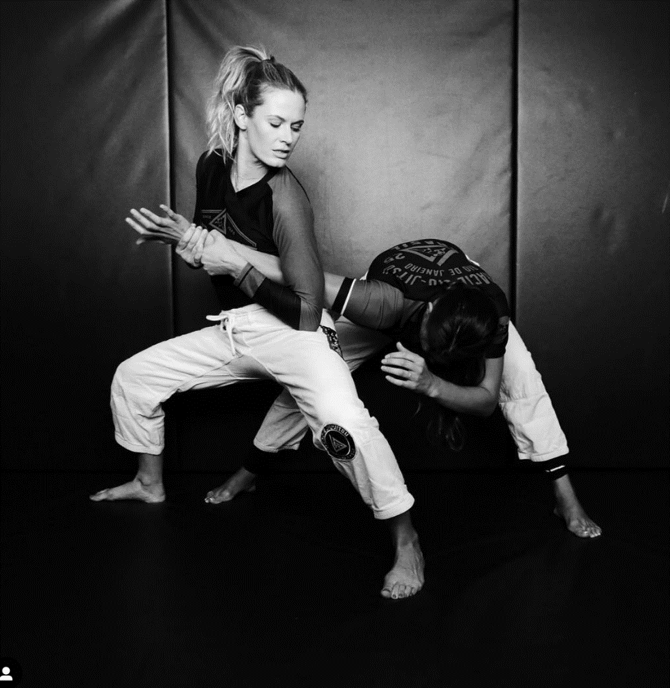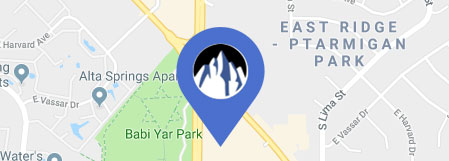Many martial arts can be seen as distant and inapplicable sports. Most of the time where people see martial arts are on TV for events such as the Olympics or a UFC fight card. It’s easy to forget that martial arts have a real life application as well. For many, martial arts can be more than pure entertainment or sport: it can determine their physical safety. When someone considers martial arts as a tool for self defense, many think of the striking arts such as kickboxing or taekwondo. While these are helpful in a self defense situation, there are solutions beyond striking. The hard reality is that not all fights stay on the feet. In many ways, fights can be ended on the ground. Brazilian Jiu jitsu, the “gentle art”, is one of many grappling arts that enables its practitioners to be comfortable with altercations on the ground. A fight going to the ground will be the first step towards defeat. For people familiar with the principles of BJJ, that’s where the fight begins. Many grapplers are more comfortable fighting on the ground than on the feet, since there are more forms of leverage and control.
BJJ originated as the battlefield art form of the samurai when disarmed. The two characters that comprise the word “jiu jitsu” in Japanese are “suffering” and “perseverance”. While the martial art originated in Japan, it was refined by the Brazillians and popularized in America by the Gracie family. Early UFC fights like Royce Gracie vs Ken Shamrock showcased the versatility and effectiveness of Brazilian Jiu Jitsu. This shocked viewers and martial artists worldwide, as it gave a way for anyone to attack and defend an opponent of any size or strength. The sport then blew up as more and more gyms began teaching the techniques the Brazilians brought to the MMA world.
An advantage of BJJ is that practitioners can effectively defend and attack without striking. Striking can damage both the victim and perpetrator, and doesn’t always effectively neutralize a situation. While most BJJ techniques don’t employ striking, that doesn’t mean that BJJ practitioners don’t know how to handle an attack on the feet. Many see BJJ as purely on the ground, but just as in any grappling sport, competitors start on the feet. Learning takedowns and takedown defense are both beneficial to self defense. If someone is running at you, knowing how to use that person’s momentum against them to take them to the ground is an advantage. In the same way, knowing how to defend against someone trying to take you to the ground will help you stay in a good spot and catch an attacker off guard. Hand fighting, a principle of BJJ, also helps neutralize situations on the feet. Something as simple as breaking someone’s grip can change the entire dynamic of a self defense situation. Done right, BJJ can be a gentler way of restraining an attacker and controlling their movements without causing serious harm the way striking may.
Yet another reason BJJ techniques are beneficial for self defense is that the art doesn’t rely on brute force. Most of the time, attackers look for someone physically smaller and weaker than them. While physical size and power may determine the winner in a striking altercation, grappling rules don’t follow suit. BJJ techniques enable smaller people to defend themselves against an opponent they normally have a disadvantage against. While a 100lb female may struggle in a fist fight with a 190lb male, BJJ levels the playing field. This is because attacks in BJJ target parts of the body that are weak and soft, such as joints and blood vessels. While a smaller victim may not be able to physically overpower a larger attacker, they can apply pressure on blood vessels to make them go unconscious. Attacks such as chokes and joint manipulations are non-discriminatory in that everyone is affected by them. In the same way, it’s beneficial to learn defense against chokes and uncomfortable holds.
Traditional BJJ is taught in the gi, which is similar to a kimono, but made of thicker and more dense material. This is applicable to a street fight in which an assailant may be wearing a jacket. Learning to grip clothes and use them against an attacker is something many other martial arts omit. BJJ techniques with the gi directly translate to self defense situations, and create a sense of familiarity with using one’s environment to their advantage. BJJ gives its practitioners a sense of body and situational awareness, while allowing them to defend themselves against attackers of all sizes. It also gives people effective ways to defend against people with weapons. Isolating limbs and joints is an important concept in the martial art that enables people to restrain an attacker’s weapon.
While all of these are applicable and significant advantages in self defense situations, one of the greatest benefits of jiu jitsu is the mental fortitude that results from its practice. Many people don’t realize the mental fight that accompanies the physical fight in a self defense situation. It is common for people to respond to a traumatic event by being paralyzed by fear or feeling out of control with panic. Even physically and mentally strong people can be frozen and defeated by their fear and panic. BJJ creates mental strength within its practitioners, forcing them to simulate physically uncomfortable situations and problem solve through them. People who have pushed through the emotional discomfort of being attacked can better handle a self defense situation in real-time. This makes BJJ one of the most advantageous martial arts to self defense.









